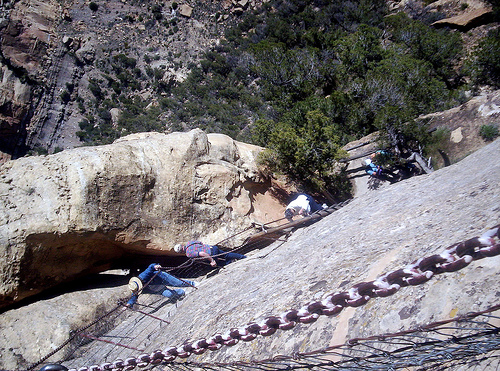Guiding skills
Contents
Objectives
Discussion within groups about the types of interpersonal skills required for tour guiding. What type of skills they think necessary and why.
Activity
Looking at client's difference requirements and expectations - including a guides need to deal with unplanned issued.
Task
- Discuss in a group the types of interpersonal skills required for tour guiding. What type of skills are necessary and why?
- Consider the following examples:
Example
A guide is leading a 2 week tour around the South Island. They arrive at Franz Joseph Glacier where all clients have a helicopter flight with a glacier landing booked. As clients are being dropped off at the helibase the helicopters cancel due to high winds. The clients are bitterly disappointed and look to the tour guide for options.
The next morning some have booked a kayaking tour on the Okarito Lagoon followed by lunch at a local restaurant before leaving Franz Joseph and travelling south.
Task - give suggestions on how the guide might show some flexibility in dealing with such a situation
Suggestion
The guide checks the weather reports and talks to the helicopter operators. It appears the heli-landings have a higher likelihood of landing the next day. The guide then checks with Okarito Kayaking Tours to see if the people booked on the next days kayaking tour can go that afternoon. He then rebooks the clients on the heliflight for the next morning. The guide also checks on the availability of glacier walking tours for the next morning and finds out if the group would be interested in that if the helicopters where again cancelled.
Guide is also showing initiative and forward planning, both essential tour-guiding skills.
Dealing with Emotional Stress
May also be part of a tour guides role. By good observation and listening to clients concerns a guide should be able to identify this.
Example A driver guide is taking a 4WD tour into a canyon. A client is noticeably nervous of the steep drop off beside the road and expresses a fear of heights.
Task - give suggestions on how to deal with the situation
Suggestion The guide seats her on the side of the vehicle away from the drop and selects wide areas for stopping, backing and turning so not to make her more nervous. The guide also demonstrates complete confidence and competence to reassure her of his/her ability. The guide also avoids any reference to the drop off.
Dealing with Physical Stress
It is a guide’s responsibility to ensure the comfort of their client and be observant to any sign of physical stress.
Task - give examples of the physical stress a tourist could experience on tour and what a guide can do to support them.
Examples
- Clients coming from other climates may struggle with the temperature changes and this can cause them great discomfort
- A guide should always be aware of clients comfort inside a vehicle and adjust heat and air con to clients requirements
- A guide should also be advising clients of expected weather, temperatures before setting out on trips so clients can wear appropriate clothing.
- Guide should be aware of how tired a group may be if they are on a busy schedule, or have had very long day. Also the fact clients may experience jet lag or have difficulty adapting to the time change early in their tours
- If the guide identifies a low ebb in the group he/she should be aware to not over load them with information and create opportunities for them to relax and revive
- Guide should also be observant of how clients cope with any physical components of a tour and offer support if necessary
- If a tour involves any kind of physical activity the guide needs to be observing the group and their capabilities
- For some clients a five minute walk uphill to a viewpoint may be very strenuous and they may require guides assistance.

